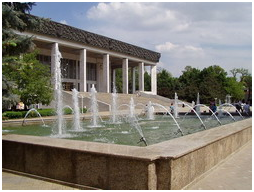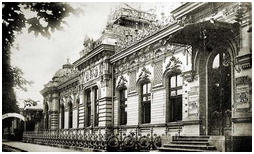Culture
Located geographically at the crossroads of Latin, Slavic and other cultures, Moldova has enriched its own culture adopting and maintaining some of the traditions of its neighbours and of other influence sources.

The country's cultural heritage was marked by numerous churches and monasteries built by the Moldavian ruler Stephen the Great in the 15th century, by the works of the later renaissance Metropolitans Varlaam and Dosoftei, and those of scholars such as Grigore Ureche, Miron Costin, Nicolae Milescu, Dimitrie Cantemir, Ion Neculce. In the 19th century, Moldavians from the territories of the medieval Principality of Moldavia, then split between Austria, Russia, and an Ottoman-vassal Moldavia (after 1859, Romania), made a significant contribution to the formation of the modern Romanian culture. Among these were many Bessarabians, such as Alexandru Donici, Alexandru Hâjdeu, Bogdan Petriceicu Hasdeu, Constantin Stamati, Constantin Stamati-Ciurea, Costache Negruzzi, Alecu Russo,Constantin Stere.
Theatres
The National Opera and Ballet Theatre of Moldova (Romanian: Teatrul Naţional de Operă şi Balet "Maria Bieșu" din Republica Moldova) in Chişinău, Moldova, is one of the leading opera and ballet theatres in Eastern Europe. It is housed in a building on the Boulevard Stefan the Great, one of the main roads in Chişinău, the capital ofMoldova. In 2012, it was given the name of the renowned opera singer Maria Bieșu.
Built during the years of the Soviet Union, the theatre has superb equipment and facilities. Following the collapse of the Soviet Union, this theatre was one of the few to retain its own ballet, opera and orchestra, with its own soloists and chorus.

Showrooms : Exhibition Centre Constantine Brancusi, the National Art Museum of Moldova, private exhibition galleries.
Folklore

Moldova has a long history of folklore, consisting of ballads, songs, tales, jokes, riddles, dances, and games. The ancient folk ballad "Miorita" is the favorite of all ballads in traditional Moldovan culture. Its rhyme reveals the melodiousness and beauty of the Romanian language.
Ileana Cosinzeana and Fat Frumos are the romantic couple present in a number of fairy tales. The brave Fat Frumos frees the beautiful and kind Ileana Cosinzeana from the evil dragon, and they live happily ever after. Pacala and Tindala are two funny men who are the characters of hundreds of jokes.
The cultural heritage

Moldovan music, dance, and arts share many traits with their Romanian counterparts. Moldovans often play the cobza, a wooden stringed instrument similar to the lute that is common in traditional Romanian music.
The Moldovan government promotes folk culture through Joc, the national dance company, and Doina, the national folk choir. There are numerous semiprofessional and amateur dance and music groups that perform around the country as well. There are also twelve professional theaters.
Moldova shares most of its literary heritage with Romania. Sometimes it is difficult to draw a dividing line between Romanian and Moldovan literature. The nineteenth century produced many outstanding Romanian authors, such as the poet Mihai Eminescu; the storyteller Ion Creanga; the linguist, writer, and historian Bogdan Petriceicu Hasdeu; the literary critic Titu Maiorescu; and many others. World-famous Romanian writers and philosophers such as Mircea Eliade and Lucian Blaga are widely studied and respected by Moldovans.



